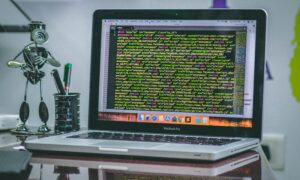One of the most important aspects of any business sector is data. All businesses rely heavily on data to function; without it, no one can hope to find their place or edge in the market. Big data can be understood in a variety of contexts, each of which typically involves a substantial quantity of information. These days, it is widely used across almost all sectors of the economy. Right now, “Big Data Machine Learning” is one of the most trendy terms that everyone is using. Big data analytics has great potential because of the massive amounts of data being produced every minute by individuals and companies worldwide.
What is Big Data Machine Learning?
Big data and machine learning are frequently used interchangeably because they are so intrinsically linked in today’s computing. Most forms of machine learning rely on extremely large amounts of training data in order to perform at the cutting-edge level at which it currently operates.
It is not enough to say that there is a lot of data when using the term “Big Data.” No dividing line can be drawn between large and small datasets. Instead, it’s a computing paradigm in which massive amounts of data—greater than ever collected by humans in history—are a dividing force behind new kinds of programs and analytical tools like machine learning. Modern data-gathering tools, especially those related to cloud computing, make it possible to amass such a large volume of data by collecting contributions from users on a web3 development platform located all across the world.
Furthermore, big data isn’t necessarily a singular project. When customers use a service provided by a business, that company may collect several gigabytes of data, if not a terabyte. For example, companies in the insurance industry can benefit from amassing data on past claims, accident rates, weather patterns, road conditions, and other factors in order to make better and more precise decisions in future.
Big Data Machine Learning – Challenges
The challenge arises because no human mind can take in, much less make sense of, such a vast quantity and variety of data. Recent innovations in cloud-based data applications and processing have prompted the use of analytics to transform these massive datasets into knowledge that can be put to use.
The field of machine learning is one place where the influx of data has made an impact. There were high hopes for machine learning and AI when scientists first began investigating these concepts. Since then, considerable strides in theory, development, and innovation have given way to the realization that technology wasn’t ready.
Cloud computing has allowed businesses in certain sectors to collect, process, and compute big-data in ways that were previously impossible. Thereby unleashing the full potential of applied machine learning algorithms.
Difference Between Big Data Analytics, Machine Learning, and Artificial Intelligence
It is essential to recognize that big data and machine learning (and, by proximity AI) are extremely separate disciplines that have grown over time.
Big Data Analytics
- Determining intelligence from data has been the goal of contemporary computing for decades. Artificial intelligence and machine learning studies have had this as a secondary objective. Nevertheless, analytics stands on its own as a distinct field of study. Data scientists and engineers within analytics seek out means of ingesting, curating, organizing, and reading both structured and unstructured information. The goal of analytics is to help people make better decisions by analyzing large amounts of data through a variety of consumption and classification techniques. Analytics can often be done automatically, and there are platforms that let people who aren’t tech experts control dashboards and visualizations without knowing how they work.
Machine Learning
This happens by making algorithms that can take in data and use it to make strategic decisions automatically. Algorithms for machine learning are designed in a way that teaches computers new behaviors and strategies from the environment and huge datasets. Machine learning is a wide field that includes many technological domains, such as deep learning and reinforcement learning.
Learn More About – Avoid downloading apps from third-party websites as these apps may contain malware or be malicious.
Artificial Intelligence
- From the beginning to the middle of the 20th century, artificial intelligence was a hot topic to discuss. Though it shares some similarities with machine learning, artificial intelligence is its own field of study. In contrast to machine learning, which emphasizes how machines can learn behaviors, an artificial intelligence development company examines in detail how intelligent machines can function in various contexts.
- It’s not hard to see the connections between these fields of study. In order to function, AI depends on machine learning algorithms and the resulting “brains” (typically implemented as neural network systems). Both make use of big data analytics, but they each offer a unique perspective.



































